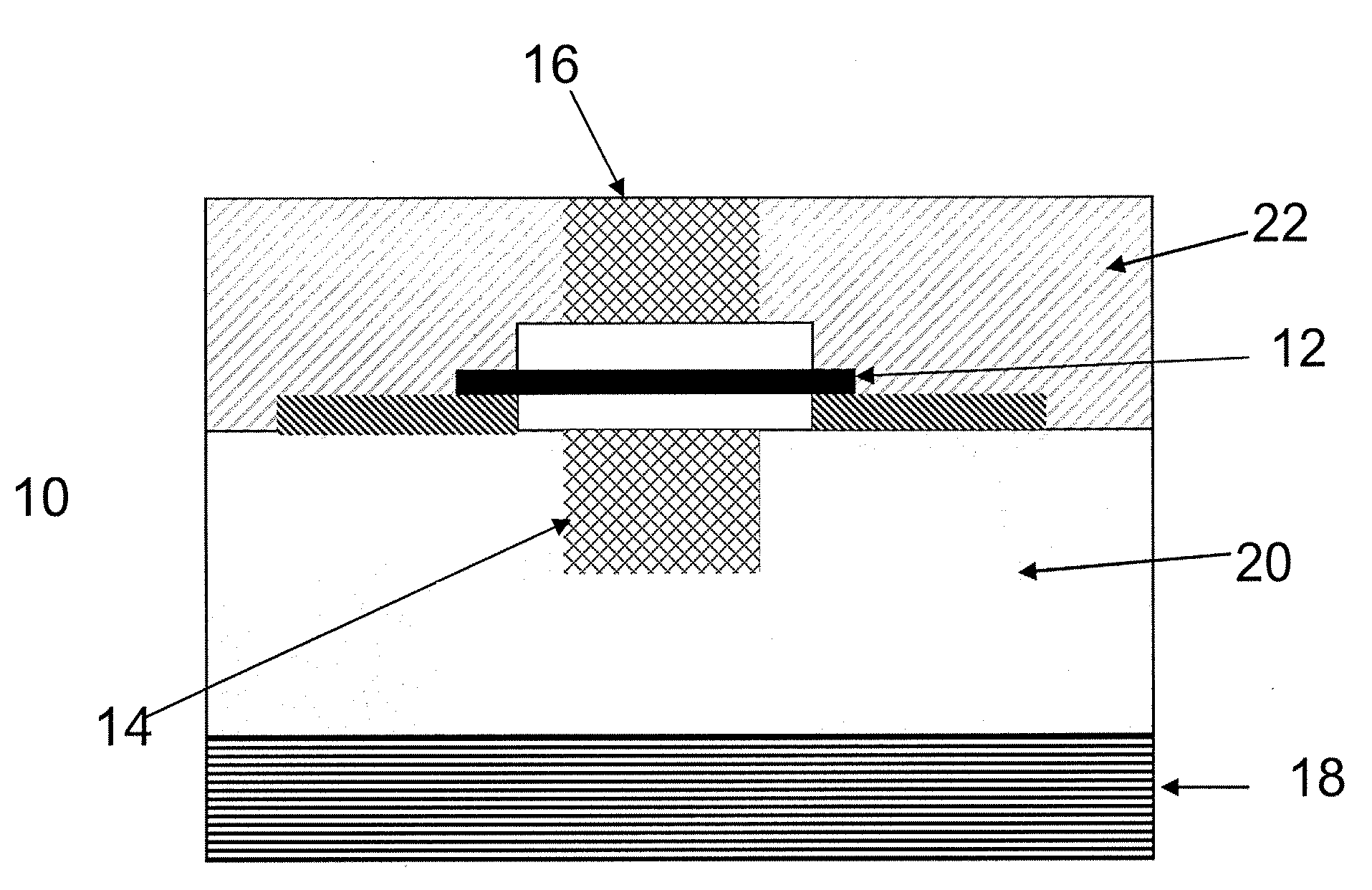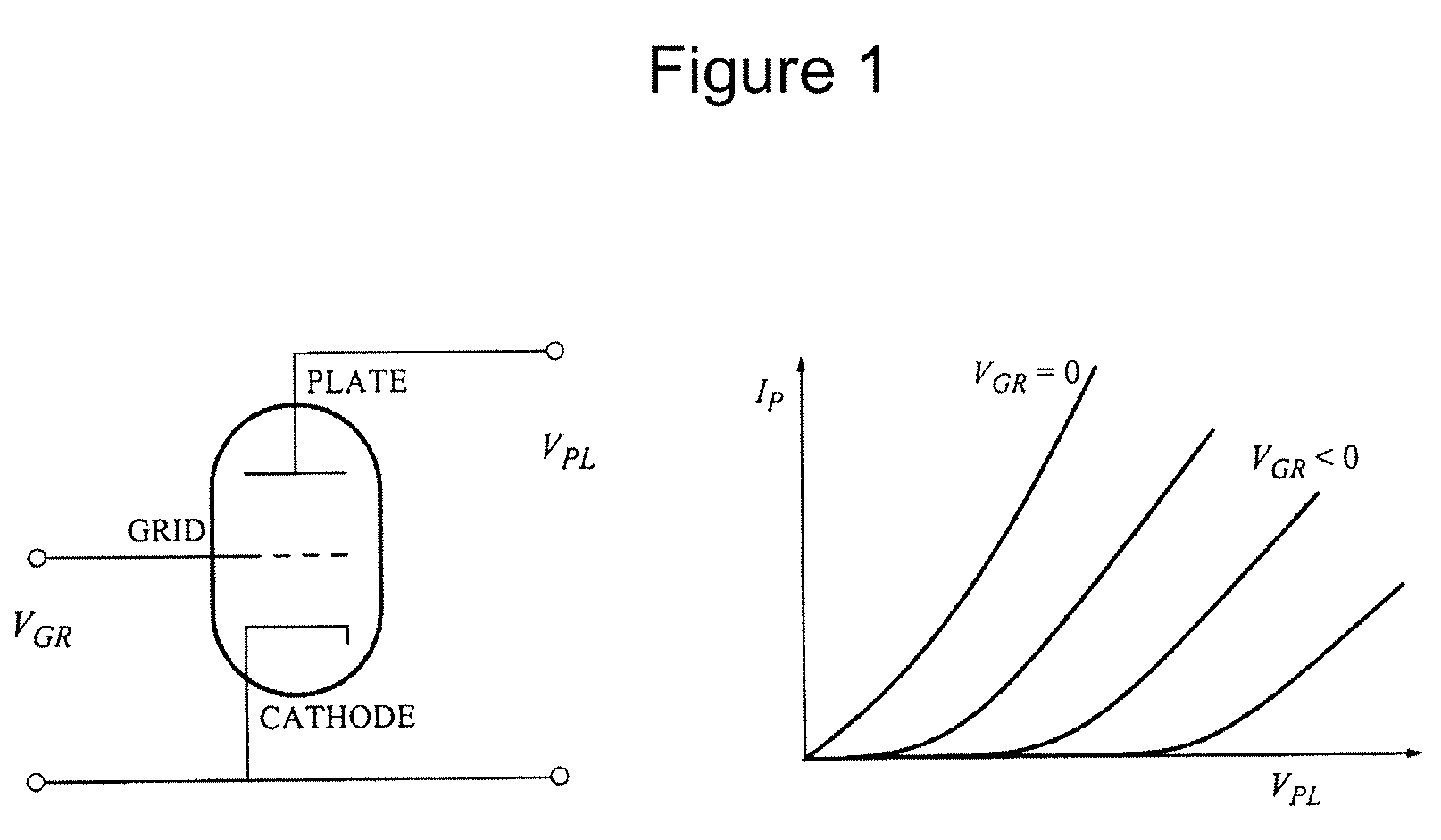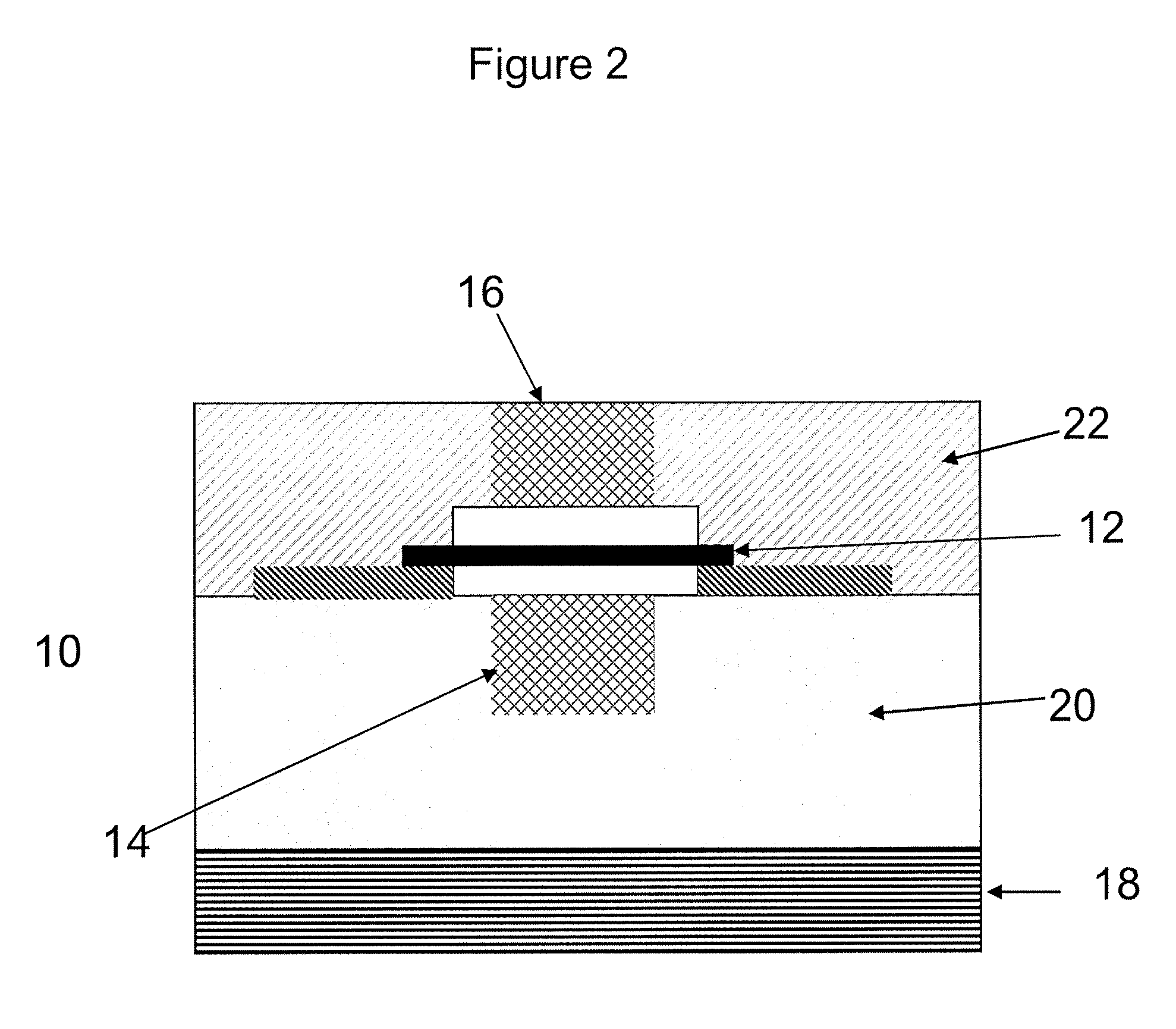Triodes using nanofabric articles and methods of making the same
a technology of nanofabric articles and nanoelectronic devices, which is applied in the manufacture of electrode systems, electric discharge tubes/lamps, and tubes with electrostatic controls, etc. it can solve the problems of shortening the service life of vacuum tubes, requiring large thermal powers for electron emission, and reducing the size of the effect of performance improvemen
- Summary
- Abstract
- Description
- Claims
- Application Information
AI Technical Summary
Benefits of technology
Problems solved by technology
Method used
Image
Examples
Embodiment Construction
[0075]The present application generally relates to the utilization of carbon nanotube films, layers and fabrics in triodes and other related vacuum microelectronic and nanoelectronic devices and methods of making the same. More specifically, the present application relates to vacuum microelectronic and nanoelectronic devices and methods of manufacturing same using standard semiconductor processing techniques. The present application describes carbon nanotube-based vacuum tube devices, specifically triodes, but also higher-order vacuum tube devices including tetrodes and pentodes. In various embodiments, nanoscale triodes which use voltages of about an order of magnitude smaller, or even less than those voltages needed by the microtriodes of the current art are provided.
[0076]The many limitations of earlier triode designs point to the desirability of a CMOS compatible nanoscale vacuum-type structure that leverages the many advantages of carbon nanotube technology. CMOS compatible nan...
PUM
| Property | Measurement | Unit |
|---|---|---|
| sizes | aaaaa | aaaaa |
| thick | aaaaa | aaaaa |
| width | aaaaa | aaaaa |
Abstract
Description
Claims
Application Information
 Login to View More
Login to View More - R&D
- Intellectual Property
- Life Sciences
- Materials
- Tech Scout
- Unparalleled Data Quality
- Higher Quality Content
- 60% Fewer Hallucinations
Browse by: Latest US Patents, China's latest patents, Technical Efficacy Thesaurus, Application Domain, Technology Topic, Popular Technical Reports.
© 2025 PatSnap. All rights reserved.Legal|Privacy policy|Modern Slavery Act Transparency Statement|Sitemap|About US| Contact US: help@patsnap.com



